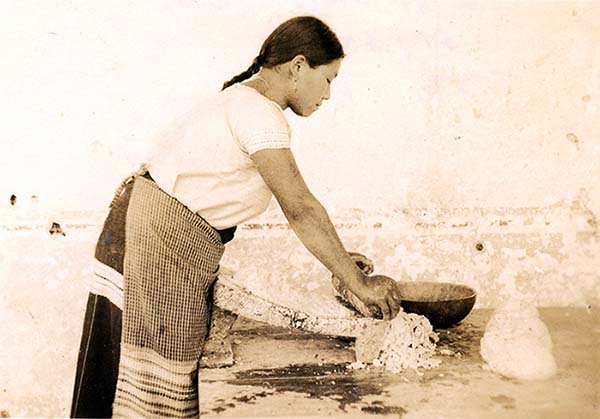Maize requires very specific preparation in order to maximize its nutritional value. This process, called nixtamalization, involves the kernels being boiled and soaked in water with an alkaline substance like white lime. This makes important nutrients like niacin available for human digestion.

Girl Grinding Corn, San Gregorio, Chiapas, Mexico
Next the maize is rinsed, and the resulting nixtamal is then ground into dough on a grinding stone, called a metate, with a mano, or handstone. The dough can be turned into a variety of foods, including tortillas and tamales.
Maize processing techniques have not changed much since ancient times. Manos and metates from archaeological contexts look very similar to modern ones.
Metates were not simply utilitarian. Ornamental metates have been found throughout Mesoamerica, indicating that they became a part of the ritual and artistic aspects of culture. The Paya metate below was collected by Doris Stone and is part of the M.A.R.I. collections.
Some may have been used as seats or thrones, illustrating the overlap in symbolism between the domestic, ceremonial, and political realms.